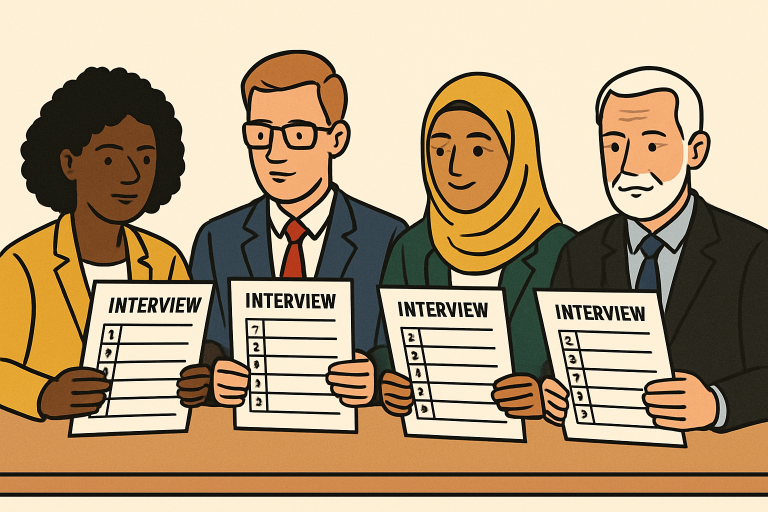Key Takeaways
- Structured hiring improves fairness and objectivity throughout recruitment processes.
- It leads to more diverse teams by minimizing unconscious bias.
- Organizations benefit from higher-quality hires and increased retention.
- Implementing standardized procedures enhances company culture and trust.
- Balanced structure and flexibility are key to maximizing hiring outcomes.
Understanding Structured Hiring
Structured hiring is a deliberate approach to recruitment that introduces consistency and transparency at each phase of the hiring journey. Every candidate is evaluated using the same carefully crafted criteria—from writing accurate job descriptions to standardized interviews and assessments. By adopting these repeatable frameworks, organizations promote equitable evaluation and reduce the influence of subjective judgment or favoritism. To assist with the transition toward structure, using a recruiting site that specializes in systematic hiring workflows can be instrumental in shepherding companies through change.
Modern hiring landscapes are fraught with conscious and unconscious biases, making fair talent acquisition a critical business need. Structured hiring responds to this challenge by ensuring every step, from screening to final selection, is done with defined, transparent metrics. Systematic recruiting is especially vital in today’s diverse and global workforce, where varied backgrounds and skillsets demand equally diverse and inclusive hiring practices.
Enhancing Diversity Through Standardization
Diversity is crucial for high-performing teams, as mixed perspectives drive innovation and better business outcomes. Standardized recruitment workflows are proven to minimize the impact of unconscious biases. For instance, requiring interviewers to score answers according to preset rubrics, rather than relying on “gut feeling,” results in more diverse shortlists and ultimately, more inclusive hiring decisions.
According to a Harvard Business Review article, structured interviews nearly double the accuracy of predicting job success compared to unstructured interviews, which often reward similarities rather than skill. This systematic approach ensures that every candidate, regardless of background, has an equal opportunity to showcase their capabilities.

Improving Candidate Quality
Beyond driving diversity, structured hiring frameworks enhance the quality of new hires. Clearly defined evaluation measures allow companies to focus on essential competencies for success in a given role. Screening candidates based on skills and relevant experience—rather than ambiguous “fit”—ensures organizations are matched with talent that meets the position’s needs and contributes long-term value.
Studies have shown that companies using structured hiring practices consistently report improved employee performance, higher retention rates, and smoother onboarding processes. Standardized selection methods make it easier for companies to quickly spot top talent and make evidence-based hiring decisions, leading to better outcomes for both candidates and organizations.
Reducing Bias with Data-Driven Decisions
Leveraging data and analytics is an essential component of structured hiring. Incorporating data-driven tools such as skill assessments, AI-powered matching, or predictive analytics further decreases subjective interpretation. Data allows hiring managers to identify and address patterns of favoritism or discrimination, making it easier to course-correct in real time. According to research featured by Forbes, AI-driven recruitment assists organizations in objectively narrowing down candidate pools with merit-based criteria, significantly reducing human bias and improving diversity outcomes.
Implementing Structured Interviews
The backbone of structured hiring is the structured interview. Here, all candidates are asked a curated set of questions relevant to job performance, and each answer is graded using a preset scoring system. This approach eliminates the tendency to reward charisma over competence or allow irrelevant details to sway hiring outcomes. Industry leaders, including Google and Unilever, have publicly credited these practices with achieving more accurate talent selection and greater diversity within their teams.
Notably, structured interviews are also less susceptible to interviewer subjectivity and bias. This method creates an equitable playing field for candidates while simplifying compliance for organizations, as interview records and evaluations can be tracked and audited.
Fostering a Culture of Inclusion
Structured hiring’s impact extends beyond recruitment; it helps create a transparent and inclusive workplace culture. When employees see that hiring decisions are fair and consistent, they build trust in leadership and foster a sense of belonging. Inclusive hiring attracts top talent, as job seekers increasingly prioritize organizational values and equitable treatment. A fair process helps close the gap in representation, which can elevate overall team performance and engagement.
Challenges and Considerations
Despite its benefits, structured hiring comes with its own set of challenges. Over-standardization can lead to rigid processes that stifle creativity or fail to capture the unique needs of different roles. Businesses must strike the right balance between structure and flexibility. Customizing evaluation frameworks to reflect specific business objectives—while still upholding fairness—is key.
Ongoing training for hiring teams is essential to ensure the process remains effective and up to date. Regular feedback, review, and iteration allow companies to refine and improve their hiring practices. As with any change, organizational buy-in and leadership support are vital for widespread adoption and long-term success.
Final Thoughts
Structured hiring offers a powerful path for organizations to build diverse, high-performing teams. By standardizing recruitment steps and leveraging objective measurement tools, companies reduce bias, hire more effectively, and nurture inclusive cultures that drive business growth. Introducing these frameworks positions organizations for a future where every candidate is given a fair shot and every team can reach its full potential.

